Doctor Cowan,
Note: Your mention of former CIA chief William Casey’s quote (‘We will know when our disinformation campaign is successful when everything the American people believe is false’) was a giveaway that the New Years Eve podcast was going to be even better than most.
This is one of the most important/implication-laden quotes that has ever been exposed.
As someone has probably informed you by now, the quote’s origin was Barbara Honegger, who was on Ronald Reagan’s 1976 presidential campaign staff and who blew the whistle on the deal Casey/Regan made with Iran to keep the hostages until after the 1976 election, to insure Reagan’s win over Carter. Her book, October Surprise, tells this sordid tale quite well. I’ve corresponded with Barbara; it’s worth repeating that — based on additional research — the quote is genuine.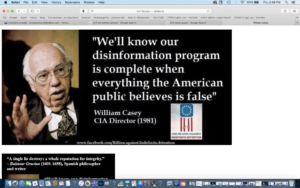
It’s also worth repeating how important it is.
‘We will know when our disinformation campaign is successful when everything the American people believe is false.’ William Casey, DCI
#
As in my first installment, for this one I will stick to a subject you brought up in your New Years Eve podcast.
You mentioned the invention of photography, which caught my attention since I am an ex-pro photog (plus filmmaker and screenwriter) and am still into it. As you say, ‘modern’ photography was invented in the early 1800s.
You also say that these early photos are likely ‘real’ because back then they didn’t have the ability to monkey with them with Photoshop and the like. Fine, if you somehow got your hands on the original glass plate, right out of the camera, which I doubt you have. The photos you speak of were no doubt reproductions (either online or in print), and are just as untrustworthy as any photo ever taken.
I’ve embedded below an example of a Civil War photo that was faked from the original, way, way before photoshop. Photographs have been altered and outright faked since the process was invented. This is just a word to the wise and not really my point here…
Since you mentioned the Civil War regarding photography, I’ll tell you something I noticed on this very subject…
This is a truly weird one, and a good example of how the deeper I go, the more I learn, the less I really know. My doubts about what we’ve been told about the American Civil War is in this context: When I hit the road seven years ago I brought Ken Burns’s epic documentary The Civil War (something like 15 hours)and watched it early on. A few weeks ago I re-viewed it. As is often the case, I noticed something new, and extremely puzzling, while viewing images I’d seen before. (In general, by the way, Burns is a master of the subtle lie-by-omission.)
The Civil War represented breakthroughs in many areas, such as machine technology, ‘the ‘art’ of war, journalism, etc. It was the first major conflict that was photographed extensively; it also represented the birth of war journalism, especially with the North; newspaper writers and photographers followed the various armies closely (the photogs making a buck doing portraits of the soldiers). Keep in mind that Ken Burns spent several years on this project and no doubt reviewed virtually every surviving photograph of the conflict. (Still, I did my own searches and found that what follows here to be true.)
The War was also supposedly the bloodiest by far, up until that time. Allegedly, single battles left thousands of slaughtered soldiers, with corpses frequently piled up on open ground. The infamous ‘Pickets Charge’ at Gettysburg alone killed something like 5,000 men in twenty minutes. The aftermath of the Battle of Little Round Top left so many dead that one reporter claimed you could walk from one end of the battle site to the other without stepping on bare ground. (Burns and other sources tell us that there were three Northern photographers following the Army of the Potomac and were at the Battle of Gettysburg.)
Yet not one of Burns’s photographs (or any I have located) showed more than about a score of corpses. In fact, the vast majority of the ‘carnage’ images were of less than six – and often these were lined up, obviously having been dragged from elsewhere. This bothered me so much that I actually kept count of how many corpses were shown in each photograph. No more than a dozen images involved more than six corpses. None, not one, showed the sort of mind-bending numbers described in the narration, and in the history books. (In fact, Burns sometimes ‘cheated’ by cropping corpse photos and re-presenting them later, supposedly at other battles.)
Addendum: I was reminded of other ‘historical events’ wherein the death tolls have been greatly exaggerated; the Jewish Holocaust of WW 2 comes to mind (I suspect that there was a holocaust but the numbers make no sense), and of course 9/11. I myself have found that more than 90% of the victims listed in various memorial sites are fraudulent. (Others have done more extensive research into the ‘Vicsim’ phenomenon.) An educated guess: two or three hundred max died that day in NYC; among other proofs, the Social Security Death Index verifies this.
I have to ask myself: Did 600,000 Americans really die in the Civil War? How deep and far back does historical disinformation go?
And by the way, WHY would ‘normal’ Americans want to celebrate these (purported) slaughters every year with their dumb-ass battle re-enactments? Is it to further imprint upon our consciousness still another Big Lie? The motive also being to persuade the citizenry that charging into a hail of flying lead for one’s country is somehow ‘noble.’ The end-slavery-as-motive for the War has long been debunked; could the re-enactments, and indeed, the textbooks (plus Burns’s work) be a flat our psy op? If recent history tells us anything, there is no limit to the magnitude of the lies we’re being told.
But my point is this: There really is no excuse for the total lack of horrendous slaughter imagery in Civil War photographs, other than some sort of profound deceit. If you have one, I’m all ears.
#
This is getting long and I know you’re a busy man, so I’ll just give two more examples of still photos — very well known and of historical import — that are faked, obviously so.
‘The Falling Man’
For me, as a ex-pro photographer (with too many magazine credits to list here), a cursory look at the photo raised a question, the first I always ask myself in photo-analyses: From what locale did the photographer snap the shutter? Looking at the image, the angle clearly shows that the photog must have been in another building on a floor close to the height of the falling man. (We can rule out a helicopter.) Look and see if you agree. No doubt, right? The picture was shot from the same height-off-ground as the subject.
Luckily, the photo being so famous (it made Time’s ‘The 100 Most Influential Images of All Time’ list), the credited photographer, Richard Drew, is featured in several videos about the photo. Like this one by the Brit newspaper, The Telegraph.
As Drew clearly and unequivocally states, he took the photo from on the ground on West Street. But hold on. This is not possible (see map), since Drew was no more than 3-400 feet from the tower. If he was where he claims he was, he’d be shooting up, almost straight up. So right from the get-go we have a problem.
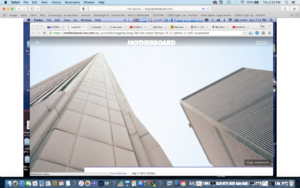
This is the bevel, which is a good 10 feet wide. There is NO WHERE on the WTC where the sides abuted directly, as in Drew’s photo. QED, a fake background.
Back in about 2008-09, when I really looked into 9/11, i.e., when I first realized that ‘truther heroes’ like David Ray Griffin were ‘missing’ some obvious shit, the above anomaly was my reason for examining the photo more closely. (Also, there was something about it that didn’t feel right.) Then, boom! A-ha! and I knew the photo was a full-blown fabrication: The corner of the WTC is beveled from top to bottom, meaning that at no point do two sides join as we see in the photo.
But it gets worse.
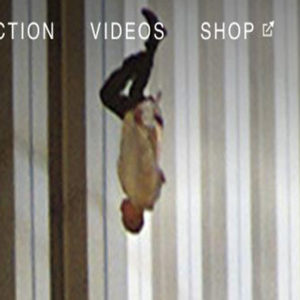
Click to enlarge, then give it a good look. The fuzzy outline around the figure is a dead giveaway that the photo is a fraud. Nothing about it is true.
I plugged the best Net reproduction of the image into Photoshop and blew it up. Click to enlarge the image to the right and notice the fuzzy border that surrounds ‘the falling man’; it’s especially noticeable below his black pant leg and around the curve of his face/head. It’s a pretty good job of laying an image over a background – much better than they did it back in the Apollo days – but the fakery technique is obvious.
This is what I mean when I say that nothing about the photo is ‘true’: that’s not the WTC in the background and the ‘man’ is an image from somewhere else. Plus, as I say, the side-angle of the subject would be impossible to get from where the photog claims to have been.
Anyone wanting more details on ‘The Falling Man’ fakery, go to my post here from 2018.
‘The Pale Blue Dot’
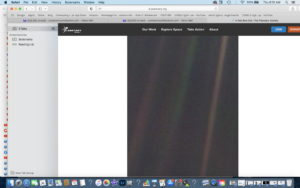
‘The Pale Blue Dot.’ That’s our Earth, supposedly, about halfway down on the right side, in the refracted band of color.
I came across the below image of Sean Carroll at a presentation about ‘The Big Picture’ and for a beat put myself in the audience yelling out a question as he shows the famous ‘Pale Blue Dot’ photo. (Supposedly inspired by Carl Sagan who had NASA turn the Voyager space probe around to do an earth ‘selfie’): ‘Hey, Sean, where are the stars?’ would be my blurt and I cannot imagine his response, given that the earth’s luminosity at that distance (four billion miles) would have made it the faintest speck in the sky (in the camera’s ‘star field,’ but there was none).
In case you’re not following me: In the ‘space’ pictures we’ve all seen, from NASA, Spacex, the Europeans, whatever (not counting telescopes) the sky is almost always jet black. This absurd deceit really got going with the Apollo frauds — the sky above the moon was always jet black, even when the earth is seen.
This was/is done because it would be impossible to get the heavenly bodies’ positions exactly right, so they said ‘Fuck it’, the masses will get used to it.’ The excuse given is that stars and planets are too faint compared to landscapes (moonscapes) or satellites lit by the sun. This is a crock, of course; in space, with no atmosphere, the star field would be nothing short of spectacular in its luminescence and and the sheer numbers of heretofore too-dim-to-see stars.
But in the case of The Pale Blue Dot, with the earth as seen from the distance of Neptune (the Voyager 1’s had just passed Neptune, outbound), this deception does not work. Think about it. We cannot see Neptune from earth but the earth shows up in a photo from there? You could fit 200 earths across the field of view. Where are the stars? No atmosphere!
Whatever the kind of camera/lens they claim was used, there is no excuse for not seeing a spectacular star field surrounding the ‘Pale Blue Dot.’ QED for fakery.
Why do it? Aside from ‘Because they can,’ the PTB like us to think of ourselves as insignificant. Anyway, what does it matter? The photo is a fake. Period.
The ‘star visibility’ issue is an important one, and will be dealt with in an upcoming ‘Doctor Cowan’s Pick a Subject’ post.
In attempting to keep these posts short (you being a busy man), I’ve tried to avoid too many hyperlinks, especially videos. But the following is important; it’s only about 12 minutes, and it does ‘double duty,’ exposing not only a horrendous piece of fakery but also the weakness of the human’s intellect.
This is my interview with famed sports photographer Walter Iooss, whose reaction and then re-reaction to media imagery makes an optimist out of George Orwell.
Doctor Cowan, if you only view one of my videos, please make it this one.
#
Those who asked for more photos of Bruno and Gus, click here.

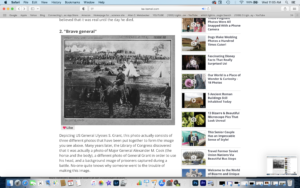
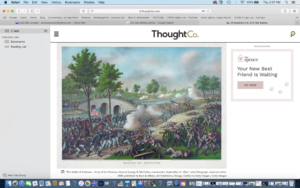
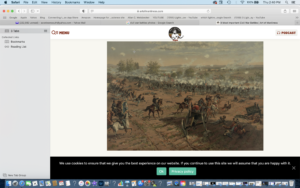
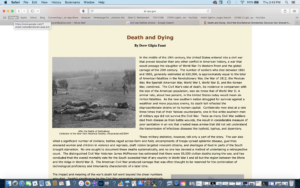
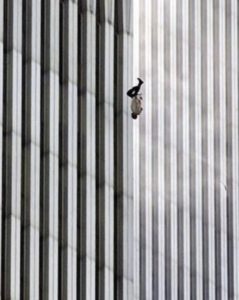
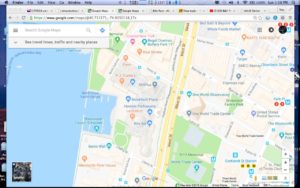
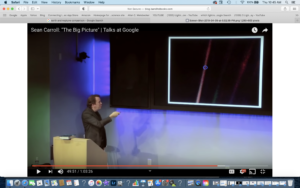

53 comments for “Doctor Cowan’s ‘Pick a Subject’, Part Two”